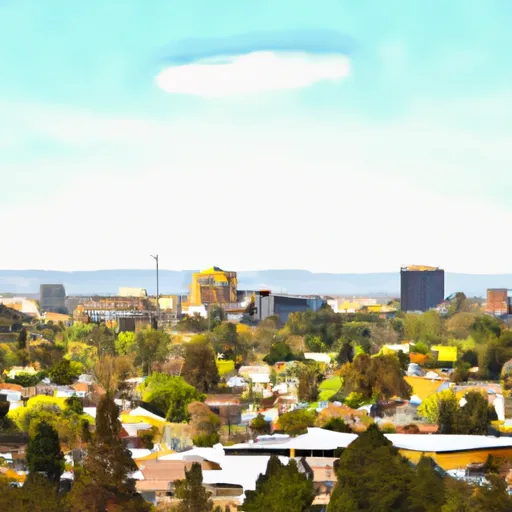-
 Snoflo Premium
Snoflo Premium
Get unlimited access to all our content
With no Ad interruptions! - Start Your Free Trial Login with existing account
Woody
Eden Index
Climate
9.0
•
Recreation
0.7
•
Community
0.9
•
Safeguard
4.1/10

Woody, California is a small unincorporated community located in the southern part of the state. Situated in Kern County, it experiences a Mediterranean climate characterized by hot, dry summers and mild, wet winters. Summers in Woody can be scorching, with temperatures often exceeding 100 degrees Fahrenheit, while winters are relatively mild, with temperatures ranging from the mid-30s to 60s.
In terms of hydrology constituents, the community lies near the Kern River, a vital water source for the region. The river supports a diverse ecosystem and provides opportunities for fishing, kayaking, and other water-based activities.
Woody and its surrounding areas offer several outdoor recreation opportunities. The nearby Sequoia National Forest provides a picturesque backdrop for activities like hiking, camping, and wildlife watching. Visitors can explore the Trail of 100 Giants, a scenic trail that winds through a grove of giant sequoias, showcasing some of the largest trees on Earth. Additionally, the Kern River offers opportunities for whitewater rafting and tubing.
Overall, Woody, California offers a unique blend of a Mediterranean climate, access to the Kern River, and proximity to the stunning Sequoia National Forest, making it a desirable destination for outdoor enthusiasts.
What is the Eden Index?
The Snoflo Eden Index serves as a comprehensive rating system for regions, evaluating their desirability through a holistic assessment of climate health, outdoor recreation opportunities, and natural disaster risk, acknowledging the profound impact of these factors on livability and well-being.
Climate Health Indicator (CHI): 9.0
Woody receives approximately
317mm of rain per year,
with humidity levels near 62%
and air temperatures averaging around
19°C.
Woody has a plant hardyness factor of
9, meaning
plants and agriculture in this region tend to thrive here all year round.
By considering the ideal temperature range, reliable water supplies, clean air, and stable seasonal rain or snowpacks, the Climate Health Indicator (CHI) underscores the significance of a healthy climate as the foundation for quality living.
A healthy climate is paramount for ensuring a high quality of life and livability in a region, fostering both physical well-being and environmental harmony. This can be characterized by ideal temperatures, reliable access to water supplies, clean air, and consistent seasonal rain or snowpacks.
Weather Forecast
Streamflow Conditions
Tulare-Buena Vista Lakes
Area Rivers
Tulare-Buena Vista Lakes
Snowpack Depths
Tulare-Buena Vista Lakes
Reservoir Storage Capacity
Tulare-Buena Vista Lakes
Groundwater Levels
Recreational Opportunity Index (ROI): 0.7
The Recreational Opportunity Index (ROI) recognizes the value of outdoor recreational options, such as parks, hiking trails, camping sites, and fishing spots, while acknowledging that climate plays a pivotal role in ensuring the comfort and consistency of these experiences.
Access to outdoor recreational opportunities, encompassing activities such as parks, hiking, camping, and fishing, is crucial for overall well-being, and the climate plays a pivotal role in enabling and enhancing these experiences, ensuring that individuals can engage in nature-based activities comfortably and consistently.
Camping Areas
| Campground | Campsites | Reservations | Toilets | Showers | Elevation |
|---|---|---|---|---|---|
| Rocky Hill | None | 683 ft | |||
| Tule Rec Area | 104 | 685 ft | |||
| Coffee Camp | None | 1,864 ft | |||
| Leavis Flat | 9 | 3,027 ft | |||
| Kern River Park | 50 | 492 ft |
Nearby Fishing
Nearby Ski Areas
Catastrophe Safeguard Index (CSI):
The Catastrophe Safeguard Index (CSI) recognizes that natural disaster risk, encompassing floods, fires, hurricanes, and tornadoes, can drastically affect safety and the overall appeal of an area.
The level of natural disaster risk in a region significantly affects safety and the overall livability, with climate change amplifying these risks by potentially increasing the frequency and intensity of events like floods, fires, hurricanes, and tornadoes, thereby posing substantial challenges to community resilience and well-being.
Community Resilience Indicator (CRI): 0.9
The Community Resilience Indicator (CRI) recognizes that education, healthcare, and socioeconomics are crucial to the well-being of a region. The CRI acknowledges the profound impact of these elements on residents' overall quality of life. By evaluating educational resources, healthcare accessibility, and economic inclusivity, the index captures the essential aspects that contribute to a thriving community, fostering resident satisfaction, equity, and social cohesion.

